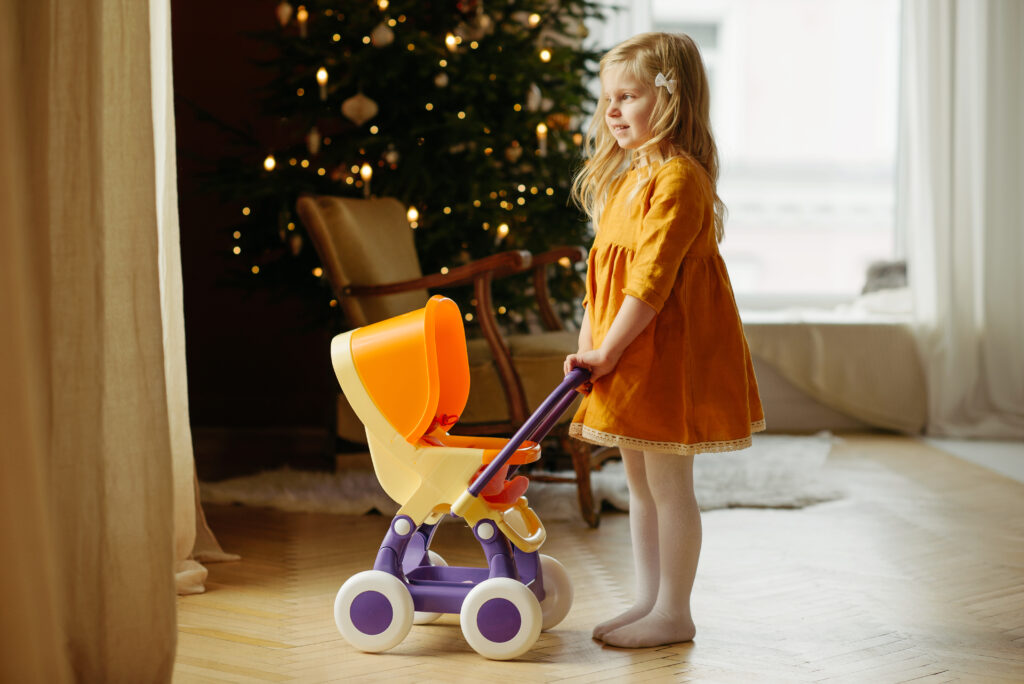Are you a parent or caregiver wondering if it’s safe to use a stroller for a child with allergies? Well, the answer is a resounding yes! Using a stroller can be a great way to keep your little one comfortable and protected from allergens while on the go. Whether it’s pollen, dust mites, or animal dander that triggers their allergies, a stroller can provide a shield against these irritants, allowing your child to enjoy the outdoors without suffering from pesky allergy symptoms. Let’s explore why using a stroller can be a game-changer for children with allergies.
Factors to Consider
Age of the child
When choosing a stroller for an allergic child, it is important to consider their age. Different strollers are designed for various age groups, such as newborns, infants, or toddlers. The stroller should provide proper support and comfort for the child’s age, as well as accommodate their specific allergy needs.
Type of stroller
There are various types of strollers available on the market, including full-size strollers, lightweight strollers, jogging strollers, and travel system strollers. Each type has its own features and benefits. Consider the child’s specific needs, such as whether they require extra support or an adjustable canopy for allergy protection, when choosing the type of stroller.
Materials used in the stroller
The materials used in the construction of the stroller can have an impact on allergic reactions. Opt for strollers made from hypoallergenic materials that are free from common allergens like latex or certain types of fabrics. This can help minimize the risk of triggering allergic reactions in sensitive children.
Cleaning and maintenance
Regular cleaning and maintenance of the stroller are essential when dealing with allergies. Look for strollers with removable fabric that can be easily washed and dried. This will help prevent the buildup of allergens and ensure a clean environment for the child.
Ventilation and airflow
Proper ventilation and airflow in the stroller are crucial for reducing allergens. Look for strollers with mesh panels or breathable fabrics that allow air to circulate freely. This can help prevent the accumulation of allergens and provide a comfortable space for the child.
Choosing a Stroller for Allergic Children
Hypoallergenic strollers
Hypoallergenic strollers are specifically designed to minimize the risk of allergic reactions in children. These strollers are made from materials that are less likely to trigger allergies, such as hypoallergenic fabrics or non-toxic plastics. They can provide a safe and comfortable environment for allergic children.
Strollers with removable fabric
Strollers with removable fabric are convenient for cleaning and maintenance. Allergens, such as dust mites or pollen, can accumulate on fabric surfaces. Being able to remove and wash the fabric ensures a clean and allergen-free stroller for the child. Look for strollers with easy-to-remove fabric that can be machine washed.
Strollers with allergen-proof materials
Some strollers are specifically designed with allergen-proof materials. These materials have a barrier or coating that prevents allergens from penetrating the fabric. Strollers with allergen-proof materials can be beneficial for allergic children, as they help minimize exposure to allergens.
Strollers with UV-protective canopy
UV-protective canopies are not only beneficial for protecting children from harmful sun rays, but they can also help in reducing allergen exposure. A stroller with a UV-protective canopy provides an additional layer of protection against outdoor allergens like pollen. This can be especially useful for children with pollen allergies.

Cleaning and Maintenance Tips
Regular cleaning schedule
Establishing a regular cleaning schedule for the stroller is vital for preventing allergen buildup. Dust, pollen, and other allergens can accumulate on the fabric and surfaces. Wipe down the stroller regularly with a damp cloth to remove any visible dirt or allergens. Set a routine for more thorough cleaning, such as washing the fabric every few weeks or as needed.
Allergen-resistant fabric
Choosing a stroller with allergen-resistant fabric can make cleaning and maintenance easier. Allergen-resistant fabric is designed to repel common allergens like dust mites or pet dander. This type of fabric can help reduce the risk of triggering allergic reactions and provide a cleaner environment for the child.
Cleaning solutions for different allergens
Different allergens require different cleaning solutions. For dust mites, a mixture of mild detergent and water can be used to clean the stroller fabric. For pollen allergens, it is recommended to use a gentle solution like a mixture of vinegar and water. Always check the manufacturer’s instructions and guidelines for cleaning specific stroller materials.
Proper drying and airing
After cleaning the stroller, it is important to ensure proper drying and airing. Damp fabric can promote the growth of mold or mildew, which can trigger allergies. Allow the stroller to air dry completely before using it again. If possible, dry the stroller in a well-ventilated area or under the sun to further reduce allergen risks.
Preventing Allergens in the Stroller
Choosing suitable clothing
Dressing the child in suitable clothing can help prevent allergens from entering the stroller. Opt for long-sleeved shirts and pants to cover exposed skin and reduce direct contact with potential allergens. Additionally, consider choosing clothing made from hypoallergenic or breathable fabrics that are less likely to accumulate allergens.
Wiping down potential allergens
Before placing the child in the stroller, it is a good practice to wipe down the surfaces to remove any potential allergens. Use a damp cloth or baby-safe wipes to gently wipe the seat, tray, and handlebars. This can help minimize the risk of allergen exposure and provide a cleaner environment for the child.
Avoiding allergen-laden areas
When using the stroller outdoors, it is important to avoid areas with a high concentration of allergens. Pollen-rich areas, parks with freshly mowed grass, or areas with known allergens should be avoided as much as possible. Opt for cleaner, less allergen-prone environments to minimize the risk of triggering allergies in the child.
Using protective covers or linings
Using protective covers or linings for the stroller can provide an additional layer of defense against allergens. There are specific covers or liners available on the market that are designed to shield the child from allergens. Look for covers or linings made from hypoallergenic materials that can be easily cleaned and maintained.

Outdoor Activities and Allergies
Pollen allergies and stroller use
For children with pollen allergies, outdoor activities can be challenging. When using the stroller during high pollen seasons, it is important to be cautious and take measures to minimize exposure. Choose routes that avoid areas with high pollen counts, and time outdoor activities when pollen levels are lower, such as in the early morning or late afternoon.
Precautions during high allergy seasons
During high allergy seasons, such as spring or fall, taking extra precautions is necessary. Consider using a stroller with a fully enclosed canopy to provide maximum protection against pollen and other outdoor allergens. Additionally, staying updated with local pollen forecasts can help plan outdoor activities accordingly and prevent unnecessary exposure.
Choosing routes and destinations
When planning outdoor activities with an allergic child, choosing routes and destinations carefully can make a difference. Avoiding areas with known allergens, such as fields of blooming flowers or grassy fields, can help minimize exposure. Opt for cleaner, allergen-free environments like paved trails, urban parks, or indoor play areas.
Timing outdoor activities
Timing outdoor activities can play a significant role in managing allergies. Pollen levels are typically higher in the early morning and late afternoon. Schedule outdoor activities during late morning or early evening when the pollen levels are lower. This can help reduce the child’s exposure to allergens and make outdoor adventures more enjoyable.
Stroller Accessories for Allergies
Air purifiers or filters
Using air purifiers or filters specifically designed for strollers can help create a cleaner and allergen-free environment. These accessories can help remove airborne allergens like pollen, dust, or pet dander from inside the stroller. Look for portable and lightweight air purifiers or filters that can be easily attached to the stroller.
Allergy-friendly seat covers
Allergy-friendly seat covers are designed to create a barrier between the child and potential allergens. Look for seat covers made from hypoallergenic materials that can be easily cleaned and maintained. These covers can help reduce the risk of triggering allergic reactions and provide a more comfortable seating surface for the child.
Sun and insect protective covers
In addition to allergens, protecting the child from sun exposure and insects is important. Look for stroller accessories that provide sun and insect protective covers. These covers can help shield the child from harmful UV rays and prevent insect bites, while also providing an additional layer of protection against allergens.
Storage solutions for allergy medications
When traveling with an allergic child, having easy access to allergy medications is crucial. Look for stroller accessories that provide convenient storage solutions for allergy medications. This can include built-in compartments or attachable pouches. Having medications readily available can help manage allergies effectively and provide peace of mind for parents.

Managing Allergies While Using Stroller
Emergency allergy action plan
It is important to have an emergency allergy action plan in place when using a stroller with an allergic child. This plan should include steps to take in case of an allergic reaction or emergency. Consult with a healthcare provider to create a personalized plan that addresses the specific needs of the child, such as administering medication or seeking immediate medical attention.
Carrying necessary allergy medications
Always carry necessary allergy medications with you when using a stroller with an allergic child. This includes antihistamines, epinephrine auto-injectors, or any prescribed medications. Keep these medications easily accessible, and make sure they are not expired. Regularly check and replenish the supplies to ensure preparedness in case of an allergic reaction.
Knowing allergy triggers
Understanding the specific allergy triggers of the child is essential in managing allergies while using a stroller. Common triggers include pollen, dust mites, pet dander, or certain foods. Keep track of any allergic reactions or symptoms the child experiences while using the stroller and try to identify the specific triggers. This knowledge can help in implementing preventive measures and avoiding allergen exposure.
Seeking medical advice
If you have any concerns or questions regarding your child’s allergies, it is important to seek medical advice. Consult with a healthcare provider or allergist who can provide specific guidance and recommendations for managing allergies while using a stroller. They can offer personalized advice and help address any concerns or uncertainties regarding your child’s allergies.
Traveling with Stroller and Allergic Child
Precautions for different environments
When traveling with a stroller and an allergic child, it is important to take precautions in different environments. Research the allergen levels of the destination and plan accordingly. Avoid areas with high allergen concentrations and choose accommodations that are allergy-friendly. Additionally, practice the same preventive measures and cleanliness routines as you would at home.
Allergy-friendly accommodations
When choosing accommodations for travel, opt for allergy-friendly options. Look for hotels or rental properties that have hypoallergenic rooms or allergen-free environments. This can help create a safer and more comfortable space for the allergic child. Inquire about the cleaning protocols, ventilation systems, and any special accommodations they offer for allergy-sensitive guests.
Preparing a travel first-aid kit
A travel first-aid kit for allergies is essential when traveling with an allergic child. Stock the kit with essential allergy medications, such as antihistamines and epinephrine auto-injectors. Additionally, include any other necessary medications, such as asthma inhalers, as well as basic first-aid supplies like bandaids and antiseptic wipes. Regularly check the kit and replenish any expired or used items.
Researching local medical facilities
Before traveling to a new destination, it is wise to research and identify local medical facilities. Locate hospitals, urgent care centers, or allergists in the area. Familiarize yourself with their contact information and hours of operation. This way, in case of an allergic reaction or emergency, you will know where to seek medical assistance.
Special Considerations for Babies
Choosing strollers with bassinet attachment
For babies with allergies, choosing strollers with a bassinet attachment can provide added comfort and support. Bassinets offer a more enclosed and secure space for newborns, providing them with a cozy environment while protecting them from allergens. Look for bassinets made from hypoallergenic materials that are easy to clean and maintain.
Monitoring and addressing allergies early
It is important to monitor and address allergies in babies early on. Pay attention to any signs or symptoms of allergies, such as persistent rashes, coughing, or difficulty breathing. Consult with a pediatrician or allergist to confirm any allergies and develop a management plan. Early intervention and treatment can help minimize the impact of allergies on the child’s health and wellbeing.
Avoiding common allergy triggers in infants
In infants, certain allergens can be particularly problematic. Common allergens to avoid include dust mites, pet dander, pollen, and certain foods like cow’s milk or eggs. Taking preventive measures, such as using hypoallergenic bedding, keeping pets away from the baby, or avoiding exposure to known allergens, can help reduce the risk of triggering allergies in infants.
Using hypoallergenic baby wipes
Choosing hypoallergenic baby wipes is important for babies with allergies. Regular baby wipes may contain fragrances or chemicals that can irritate sensitive skin and trigger allergic reactions. Opt for hypoallergenic baby wipes that are free from potential allergens, ensuring a safer and gentler option for babies with allergies.
Conclusion
Choosing a stroller for an allergic child involves considering several factors, such as the age of the child, type of stroller, materials used, cleaning and maintenance, and ventilation. Hypoallergenic strollers, strollers with removable fabric, allergen-proof materials, and UV-protective canopies are options to explore. Regular cleaning, using allergen-resistant fabric, employing suitable cleaning solutions, and proper drying and airing are a must. Preventing allergens in the stroller involves choosing suitable clothing, wiping down surfaces, avoiding allergen-laden areas, and using protective covers. Outdoor activities require precautions, such as avoiding high pollen areas, choosing routes and destinations wisely, and timing activities. Stroller accessories like air purifiers, allergy-friendly seat covers, sun and insect protective covers, and storage solutions for allergy medications can provide added protection. Managing allergies while using a stroller involves having an emergency allergy action plan, carrying necessary allergy medications, knowing allergy triggers, and seeking medical advice when needed. Traveling with a stroller and an allergic child requires taking precautions, choosing allergy-friendly accommodations, preparing a travel first-aid kit, and researching local medical facilities. Special considerations for babies include choosing strollers with bassinet attachments, monitoring and addressing allergies early, avoiding common allergy triggers, and using hypoallergenic baby wipes. By considering these factors and taking necessary precautions, it is possible to provide a safe and comfortable stroller experience for allergic children.


